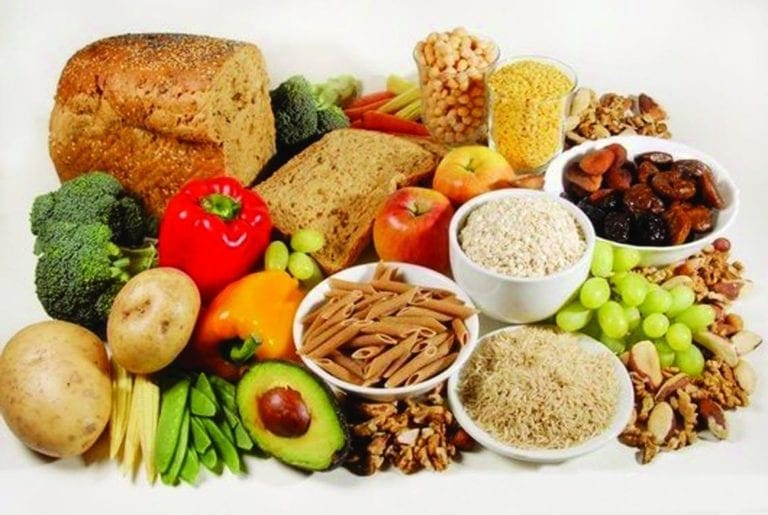Inflammatory bowel disease, or IBD, is a term used to describe inflammation of the gastrointestinal mucosa of unknown etiology. There are a selection of hypotheses associated to the development and perpetuation of IBD. Three main theories emerge from the literature. The first implicates a persistent intestinal infection; the second demonstrates that the upcoming signs of IBD are due to a defective mucosal barrier to luminal antigens; and the next suggests a dysregulated host immune response to ubiquitous antigens.
Contents
What are the nutritional components, if any, behind inflammatory bowel disease?
It is believed that IBD has both genetic and environmental components, therefore it’s immunologically mediated. Information gathered from IBD patients showing cytokine profiles, permeability defects, response to treatment and natural history of disease, may indicate a heterogeneous group of disorders that fall under the headings of ulcerative colitis, or UC, and Crohn’s disease, or CD. Previous epidemiological data on diet in UC and CD are conflicting, partly as a result of the heterogeneity of those diseases, making it difficult to get reliable statistics and publication bias, such as in the case of negative structures from breastfeeding.
Glutamine, Fiber and Fatty Acids
Diets high in glutamine, a significant source of energy for enterocytes, in addition to being the preferred fuel of the small intestine, are used with varying success. Glutamine is bekieved to exert its trophic effects on the small intestine by increasing protein synthesis and producing alanine for enteric gluconeogenesis. There is proof that glutamine protects the small intestinal mucosa during acute disease. However, oral glutamine supplements do not restore to normal the increased intestinal permeability discovered in patients with CD and these supplements do not beneficially affect the sufferers’ CDAI or C-reactive protein, also abbreviated as CRP, levels. Similarly, a randomized controlled trial demonstrated no benefit was connected to the usage of glutamine-enriched polymeric formulas in children with CD.
In animal research studies, dietary fiber has been implicated in keeping the integrity of the intestine, as well as in preventing bacterial translocation from the gut to the mesenteric lymph nodes. Short-chain fatty acids (SCFA, C1 to C6 natural fatty acids), are created by the fermentation of dietary polysaccharides in the common anaerobic bacteria in the colon. These SCFA are a source of energy for the colonocytes, which together improve sodium and water absorption, and promote blood circulation. Decreased quantities of SCFA, particularly butyrate, and a defect in the oxidation of butyrate from colonocytes, are indicated as a mechanism in the pathogenesis of inflammatory bowel disease. Evidence to support that concept requires the observation of the oxidation of C-labelled butyrate, demonstrated to decrease in patients with active UC in comparison with healthy controls. However, researchers have failed to reveal the differences between UC patients and controls in the oxidation of rectally administered C-labelled butyrate.
TPN supplemented with SCFA improved function adaptation to intestinal resection in rats. It remains to be discovered when patients with short bowel syndrome may make the most of SCFA.
Butyrate (C4 fatty acid) administered to UC patients contributed to remission levels like corticosteroids and mesalamine. In patients with CD, both intestinal biopsies and lamina propria cells packaged with butyrate had substantially decreased levels of inflammatory cytokines (TNF), possibly due to a reduction in NF?B stimulation and I?B degradation.
Eicosanoids are inflammatory mediators, which have also been implicated in the pathogenesis of chronic inflammatory damage in the intestine. Specimens from patients with IBD show enhanced eicosanoid formation. High dietary intake of omega-6 polyunsaturated fatty acids, abbreviated as PUFAs, which reduces omega-3 intake, and may contribute to IBD development. The benefits of fish oil, which contain n3 fatty acids, that were shown in certain inflammatory disorders, such as psoriasis and rheumatoid arthritis. Epidemiological observations of this very low prevalence of IBD in Japanese and Inuit populations consuming substantial n3 fatty acid fish provided a justification for utilizing n3 fatty acids in IBD. The n3 fatty acids are considered to compete with n6 fatty acids as precursors of eicosanoid synthesis. The n3 products reveal a series of 5 leukotrienes, which have considerably less physiological activity when compared with the arachidonate established series 4 counterparts. In addition, fish oil might have an anti inflammatory effect.
Rats fed with fish oil that had TNBS-induced inflammatory lesions in the intestine showed less prostaglandin- and leukotriene-mediated resistant response. Parenteral lipid emulsions enhanced with n3 fatty acids reduce diarrhea, weaken morphological changes and decreased colonic concentrations of inflammatory mediators in an animal model of acetic acid induced colitis.
Loeschke et al conducted a placebo-controlled trial of n3 fatty acids in preventing relapse in UC. Patients in remission who got n3 fatty acids experienced fewer relapses than did those receiving placebo. Unfortunately, the favorable results of this research study did not last throughout the total amount of the two year research, possibly due to diminished compliance punctually. In a multicenter placebo controlled relapse prevention trial, Belluzzi et al found a significant drop in the relapse rate in CD patients given an exceptional formula designed to allow postponed ileal release of n3 fatty acids. A fish oil diet has been shown to increase eicosapentanoic and docosahexanoic acids in the intestinal mucosal lipids of IBD sufferers, also demonstrating a reduction in arachadonic acid. A gain in the synthesis of leukotriene B5 along with a 53 percent decrease of leukotriene B4 was shown in UC patients, whereas the fish oil treatment revealed a nonsignificant trend to faster remission. Fish oil supplementation results in clinical improvement of active mild to moderate disease, but was not associated with a significant reduction in leukotriene B4 production. Consequently, fish oil supplementation of the diet may provide some short-term benefit to people with CD or UC. Using probiotics and prebiotics has received much attention; the interested reader is referred to recent reviews in this area.
Clinical Implications
It is widely known that nutritional deficiencies are common in people with CD and UC, and people have to be expected, diagnosed and treated. There are no special diets which may be recommended for all patients with IBD; dietary therapy needs to be individualized. TPN or TEN may be necessary to restore nutrient equilibrium in selected IBD patients with malnutrition, but in adults these interventions do not provide an essential decision to modify disease activity. The omega-3 PUFAs in fish oil may reduce disease activity in UC and CD when used at the short term together with regular medical therapy. Their mechanism of action is to enhance the activity of the amino acids PPAR, or peroxisome proliferator-activated receptors, in the intestine, inhibiting the AP-1 signaling pathway and NF-?B, weakening pro-inflammatory cytokine receptor expression. Future research will focus on the identification and use of certain dietary lipids to reduce intestinal inflammatory activity and also to maintain long-term disease remission.
Information referenced from the National Center for Biotechnology Information (NCBI) and the National University of Health Sciences. The scope of our information is limited to chiropractic and spinal injuries and conditions. To discuss the subject matter, please feel free to ask Dr. Jimenez or contact us at 915-850-0900 .
By Dr. Alex Jimenez

Additional Topics: Wellness
Overall health and wellness are essential towards maintaining the proper mental and physical balance in the body. From eating a balanced nutrition as well as exercising and participating in physical activities, to sleeping a healthy amount of time on a regular basis, following the best health and wellness tips can ultimately help maintain overall well-being. Eating plenty of fruits and vegetables can go a long way towards helping people become healthy.

WELLNESS TOPIC: EXTRA EXTRA: Managing Workplace Stress
Blank
References
Close Accordion
General Disclaimer, Licenses and Board Certifications *
Professional Scope of Practice *
The information herein on "Glutamine, Fiber & Fatty Acid Intake for IBD" is not intended to replace a one-on-one relationship with a qualified health care professional or licensed physician and is not medical advice. We encourage you to make healthcare decisions based on your research and partnership with a qualified healthcare professional.
Blog Information & Scope Discussions
Welcome to El Paso's Premier Wellness and Injury Care Clinic & Wellness Blog, where Dr. Alex Jimenez, DC, FNP-C, a Multi-State board-certified Family Practice Nurse Practitioner (FNP-BC) and Chiropractor (DC), presents insights on how our multidisciplinary team is dedicated to holistic healing and personalized care. Our practice aligns with evidence-based treatment protocols inspired by integrative medicine principles, similar to those on this site and on our family practice-based chiromed.com site, focusing on naturally restoring health for patients of all ages.
Our areas of multidisciplinary practice include Wellness & Nutrition, Chronic Pain, Personal Injury, Auto Accident Care, Work Injuries, Back Injury, Low Back Pain, Neck Pain, Migraine Headaches, Sports Injuries, Severe Sciatica, Scoliosis, Complex Herniated Discs, Fibromyalgia, Chronic Pain, Complex Injuries, Stress Management, Functional Medicine Treatments, and in-scope care protocols.
Our information scope is multidisciplinary, focusing on musculoskeletal and physical medicine, wellness, contributing etiological viscerosomatic disturbances within clinical presentations, associated somato-visceral reflex clinical dynamics, subluxation complexes, sensitive health issues, and functional medicine articles, topics, and discussions.
We provide and present clinical collaboration with specialists from various disciplines. Each specialist is governed by their professional scope of practice and their jurisdiction of licensure. We use functional health & wellness protocols to treat and support care for musculoskeletal injuries or disorders.
Our videos, posts, topics, and insights address clinical matters and issues that are directly or indirectly related to our clinical scope of practice.
Our office has made a reasonable effort to provide supportive citations and has identified relevant research studies that support our posts. We provide copies of supporting research studies upon request to regulatory boards and the public.
We understand that we cover matters that require an additional explanation of how they may assist in a particular care plan or treatment protocol; therefore, to discuss the subject matter above further, please feel free to ask Dr. Alex Jimenez, DC, APRN, FNP-BC, or contact us at 915-850-0900.
We are here to help you and your family.
Blessings
Dr. Alex Jimenez DC, MSACP, APRN, FNP-BC*, CCST, IFMCP, CFMP, ATN
email: coach@elpasofunctionalmedicine.com
Multidisciplinary Licensing & Board Certifications:
Licensed as a Doctor of Chiropractic (DC) in Texas & New Mexico*
Texas DC License #: TX5807, Verified: TX5807
New Mexico DC License #: NM-DC2182, Verified: NM-DC2182
Multi-State Advanced Practice Registered Nurse (APRN*) in Texas & Multi-States
Multi-state Compact APRN License by Endorsement (42 States)
Texas APRN License #: 1191402, Verified: 1191402 *
Florida APRN License #: 11043890, Verified: APRN11043890 *
License Verification Link: Nursys License Verifier
* Prescriptive Authority Authorized
ANCC FNP-BC: Board Certified Nurse Practitioner*
Compact Status: Multi-State License: Authorized to Practice in 40 States*
Graduate with Honors: ICHS: MSN-FNP (Family Nurse Practitioner Program)
Degree Granted. Master's in Family Practice MSN Diploma (Cum Laude)
Dr. Alex Jimenez, DC, APRN, FNP-BC*, CFMP, IFMCP, ATN, CCST
My Digital Business Card
Licenses and Board Certifications:
DC: Doctor of Chiropractic
APRNP: Advanced Practice Registered Nurse
FNP-BC: Family Practice Specialization (Multi-State Board Certified)
RN: Registered Nurse (Multi-State Compact License)
CFMP: Certified Functional Medicine Provider
MSN-FNP: Master of Science in Family Practice Medicine
MSACP: Master of Science in Advanced Clinical Practice
IFMCP: Institute of Functional Medicine
CCST: Certified Chiropractic Spinal Trauma
ATN: Advanced Translational Neutrogenomics
Memberships & Associations:
TCA: Texas Chiropractic Association: Member ID: 104311
AANP: American Association of Nurse Practitioners: Member ID: 2198960
ANA: American Nurse Association: Member ID: 06458222 (District TX01)
TNA: Texas Nurse Association: Member ID: 06458222
NPI: 1205907805
| Primary Taxonomy | Selected Taxonomy | State | License Number |
|---|---|---|---|
| No | 111N00000X - Chiropractor | NM | DC2182 |
| Yes | 111N00000X - Chiropractor | TX | DC5807 |
| Yes | 363LF0000X - Nurse Practitioner - Family | TX | 1191402 |
| Yes | 363LF0000X - Nurse Practitioner - Family | FL | 11043890 |








